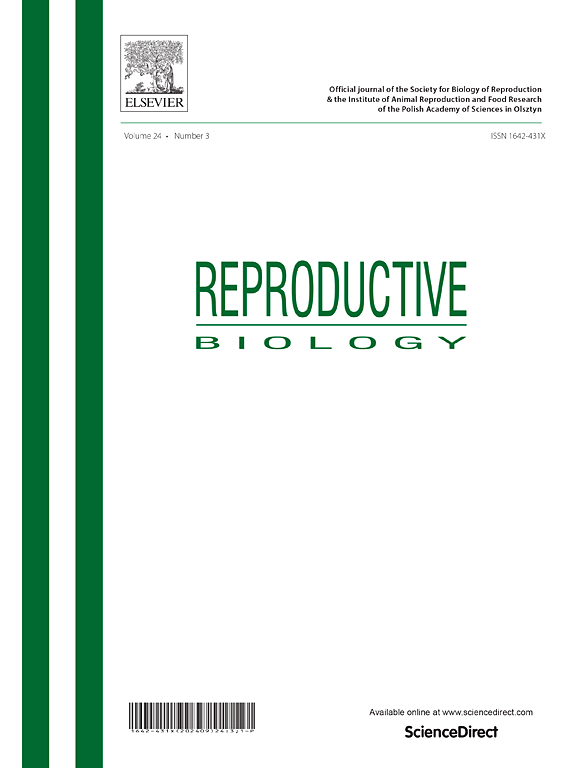从基因组到表观基因组:谁是决定本体发生的表观遗传机制的分子标志的主要参与者?
IF 2.5
3区 生物学
Q3 REPRODUCTIVE BIOLOGY
引用次数: 0
摘要
遗传因素是影响哺乳动物本体发育的基本决定因素之一。然而,一方面,在多种哺乳动物的本体发育过程中,人们发现表观遗传因素对细胞内机制网络产生了重大而深刻的影响,这些网络不仅涉及基因表达的启动和抑制,还涉及基因表达的上调和下调。另一方面,作为基因转录活性重编程基础的表观遗传学机制(称为表突变)的损伤不仅会导致哺乳动物胚胎、胎儿和新生儿出现各种急性和慢性发育异常,还会导致细胞过早/过快衰老或肿瘤性转化,甚至神经退行性疾病和精神疾病。本文的重点是揭示表观遗传因子的识别、分类和特征描述方面的现有知识,以及对当前和未来趋势的多方面解读,旨在认识哺乳动物正常本体发育的表观遗传背景。此外,本文的下一个目标是揭示在基因组 DNA 表观遗传重编程过程中导致分子失衡的一系列干扰的机理。上述失衡似乎在整个本体发育过程中的解剖学、组织学和生理病理学过程的启动和进展中起着主导作用。总之,本文举例说明的不同模式的表观遗传辅助治疗程序,可能是治疗由表观遗传景观功能障碍引发的多种疾病(如骨髓增生异常综合征或癫痫)的可靠而可行的强大工具。本文章由计算机程序翻译,如有差异,请以英文原文为准。
From genome to epigenome: Who is a predominant player in the molecular hallmarks determining epigenetic mechanisms underlying ontogenesis?
Genetic factors are one of the basic determinants affecting ontogenesis in mammals. Nevertheless, on the one hand, epigenetic factors have been found to exert the preponderant and insightful impact on the intracellular mechanistic networks related to not only initiation and suppression, but also up- and downregulation of gene expression in all the phases of ontogenetic development in a variety of mammalian species. On the other hand, impairments in the epigenetic mechanisms underlying reprogramming of transcriptional activity of genes (termed epimutations) not only give rise to a broad spectrum of acute and chronic developmental abnormalities in mammalian embryos, foetuses and neonates, but also contribute to premature/expedited senescence or neoplastic transformation of cells and even neurodegenerative and mental disorders. The current article is focused on the unveiling the present knowledge aimed at the identification, classification and characterization of epigenetic agents as well as multifaceted interpretation of current and coming trends targeted at recognizing the epigenetic background of proper ontogenesis in mammals. Moreover, the next objective of this paper is to unravel the mechanistic insights into a wide array of disturbances leading to molecular imbalance taking place during epigenetic reprogramming of genomic DNA. The above-indicated imbalance seems to play a predominant role in the initiation and progression of anatomo-, histo-, and physiopathological processes throughout ontogenetic development. Conclusively, different modalities of epigenetically assisted therapeutic procedures that have been exemplified in the current article, might be the powerful and promiseful tools reliable and feasible in the medical treatments of several diseases triggered by dysfunctions in the epigenetic landscapes, e.g., myelodysplastic syndromes or epilepsy.
求助全文
通过发布文献求助,成功后即可免费获取论文全文。
去求助
来源期刊

Reproductive biology
生物-生殖生物学
CiteScore
3.90
自引率
0.00%
发文量
95
审稿时长
29 days
期刊介绍:
An official journal of the Society for Biology of Reproduction and the Institute of Animal Reproduction and Food Research of Polish Academy of Sciences in Olsztyn, Poland.
Reproductive Biology is an international, peer-reviewed journal covering all aspects of reproduction in vertebrates. The journal invites original research papers, short communications, review articles and commentaries dealing with reproductive physiology, endocrinology, immunology, molecular and cellular biology, receptor studies, animal breeding as well as andrology, embryology, infertility, assisted reproduction and contraception. Papers from both basic and clinical research will be considered.
 求助内容:
求助内容: 应助结果提醒方式:
应助结果提醒方式:


